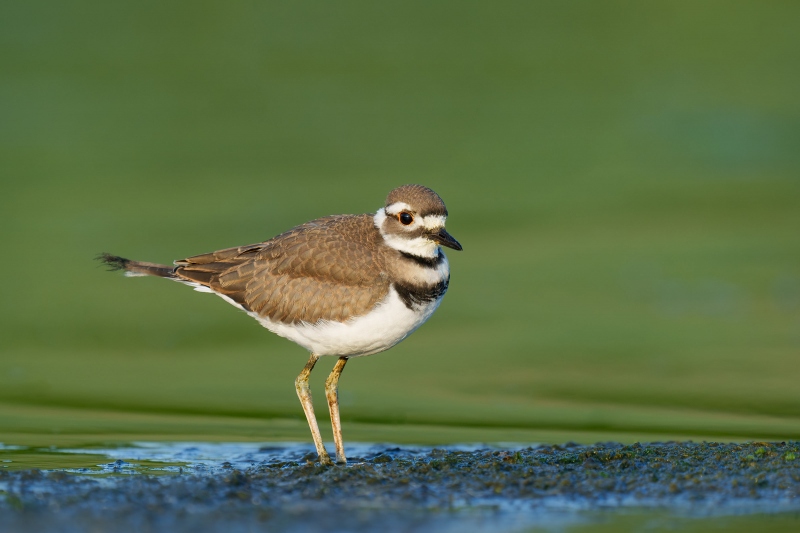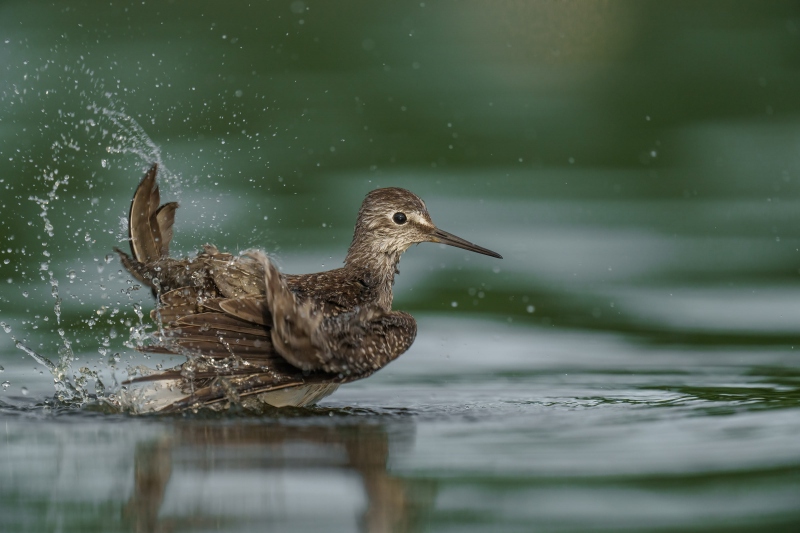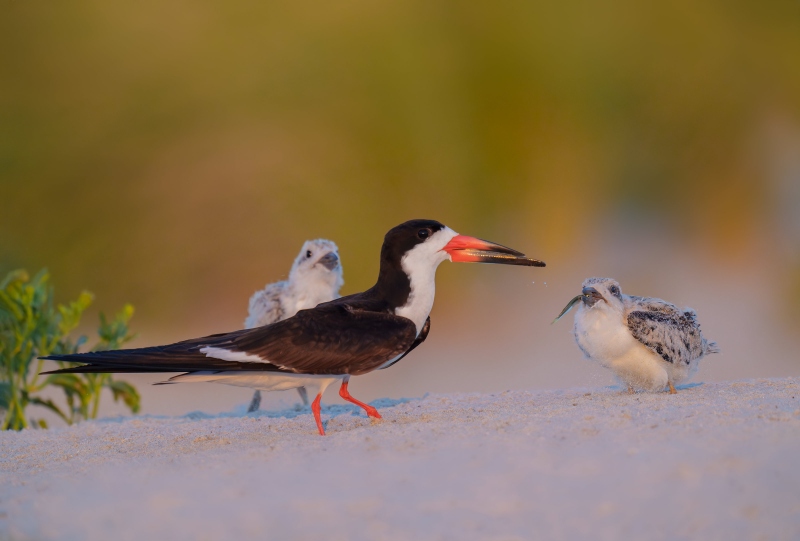This Just In!
Despite deplorable conditions — wind against a bright sun — at Nickerson Beach Park this morning, Friday 11 AU 2023, I did quite well. There are a zillion black Skimmer chicks and about half a zillion Common Tern chicks. Nearly all of the other photographers there had zero clue as to handle the tough situation.
What is the World Coming To?
For as long as I can remember, I have always had Sports Center or Jeopardy or Chopped running on TIVO as background when I am working on the laptop, that usually in excess of many hours every day for one reason of another. More and more recently, I have found myself turning off the TV and listening to a John Prine mix on you tube. On Saturday, “I Remember Everything” popped up first. I happened to glance at the video. For the next 3:09 I watched and listened, captivated by the words, the sounds, the old photographs, and the old letters and postcards. Can you say heartwarming and poignant? I choked up and cried a bit at times — How I miss you in the morning light, like roses miss the dew. Then I watched it again.
This is the official lyric video for the last recorded song by John Prine before his death on April 7, 2020. The song was written by Prine and his longtime collaborator Pat McLaughlin. And to think that I had never heard of Prine until two years ago. Use the little white search box on the upper right of each blog post and type in John Prine for links to more of his great music.
Your Call?
Please leave a comment letting us know which you feel is the weakest of today’s three featured images. Be sure to let us know why you made your choice. I have a clear favorite as to which one is the worst of the three. I will share that with you here on Sunday.
My Call
In the last blog post, the Lesser Yellowlegs striding and the adult oystercatcher in sweet afternoon light were my two favorites. Why? The background in each image was sublime. And the skimmer chick being brooded did not exactly suck either (though one reader disagreed with me).
What’s Up?
Jim and I became ensnared in an horrific traffic jam on I-4 on the way to the airport on Thursday mornings. Had Maps not suggested an alternative route, I would have miss my flight to Islip for sure.
After a blessedly uneventful flight (my favorite kind), I arrived on time at ISP, picked up a rental car, paid a brief visit to younger daughter Alissa, headed to the Fish Store in Babylon, and then drove to my VRRBO lodgings in Valley Stream.
Today is Friday 11 August 2023. I will likely be at Nickerson early this morning and probably the East Pond this afternoon. If you love shorebirds, terns, and gulls, late summer through fall is a great time to get out into the field and do lots of bird photography. In particular, the southbound plovers, oystercatchers, and sandpipers are usually quite cooperative; the Common Tern chicks on Long Island are fledged and flying, and the skimmer chicks there are getting larger; some are flying. Today is a great day to consider joining me on Long Island — three folks already have, or on a DeSoto IPT. Many IPT veteran John Dupps is joining me for the November IPT; we will probably be sharing an AirBnB in Gulfport!
JBWR/Nickerson Beach Sessions
Nickerson will be rife with Black Skimmer chicks and fledglings and lots of flight photography. Juvenile shorebird photography opportunities at my soul place, the East Pond, JBWR, will peak this coming week (for about three mornings). If you would like to explore the possibility of joining me for an inexpensive In-the-Field Session or two at either or both locations, please get in touch ASAP via e-mail or call or text me on my cell at 863-221-2372. Monday morning at JBW is sold out.
|
|
B&H Bild 2023 Expo – 2 Days Of Inspiration, Learning, and Creativity: SEPT 6 & 7, 2023 |
Registration is Free!
In New York City at The Javits Center
Easily Accessible to anyone in The Tri-State Area
A Celebration of 50 Years of Creativity Through Photo, Video and Audio
Click here to learn more or to register.
More than 100 World Class Speakers
Portfolio Reviews
Photo Walks
Photo & Video Experiences
Tri-State Accessibility
Audio Experience
Contests and Prizes
Learn New Skills
Show Specials on Gear
Network with the Premier Photographers, and Videographers
|
|
|
This image was created on 10 August 2022 during an In-the-Field session at the East Pond, Jamaica Bay Wildlife Refuge, Queens, NY. Seated on damp mud behind my lowered tripod, I used the Robus RC-5558-3 Vantage Series 3 Carbon Fiber Tripod topped by the Levered-Clamp FlexShooter Pro-mounted Sony FE 600mm f/4 GM OSS lens with the Sony FE 1.4x Teleconverter (at 840mm) and The One, the Sony Alpha 1 Mirrorless digital camera. Exposure was determined via Zebras with ISO on the rear dial. ISO 800. 1/800 sec. at f/5.6 (wide open). AWB at 6:45:38am on a barely sunny morning. Tracking: Expand Spot AF-C with Bird Face-Eye detection enabled was active at the moment of exposure and performed perfectly. Be sure to click on the image to enjoy the larger version. Image #1: Juvenile Kildeer |
Killdeer at JBWR
Adult Killdeer at the East Pond are notoriously shy. Even the juveniles of this species are usually skittish. When working last August with Muhammand Arif, we were blessed to find this relatively tame bird in fresh juvenal plumage. In more than 30 years of photography at the East Pond, I have never gotten close enough to a killdeer photograph one. Note that each feather of the upperparts sports a narrow reddish-brown fringe that gives the bird its warm and evenly patterned look. Most juvenile shorebirds have a similar look.
Shorebirds: Beautiful Beachcombers
Shorebirds: Beautiful Beachcombers was written — by me 🙂 — for naturalists and birders, the text tells you everything you’ve always wanted to know about North America’s sandpipers, godwits, yellowlegs, phalaropes, plovers, avocets, stilts, and oystercatchers. Topics covered include identification and aging, shorebird behavior including their incredible migrations, feeding and diet, mating and breeding strategies, eggs, nests, and young, conservation efforts, and shorebirding tips. Also included are approximately 50 species accounts covering all of the regularly occurring North American shorebird species. With 70 of my images and 26 more by some of the world’s best nature photographers, the book contains the one of the finest collections of shorebird photographs ever published in a single volume.
|
|
|
This image was also created on 10 August 2022 during an In-the-Field session at the East Pond, Jamaica Bay Wildlife Refuge, Queens, NY. Again, seated on damp mud behind my lowered tripod, I used the Robus RC-5558-3 Vantage Series 3 Carbon Fiber Tripod topped by the Levered-Clamp FlexShooter Pro-mounted Sony FE 600mm f/4 GM OSS lens with the Sony FE 1.4x Teleconverter (at 840mm) and The One, the Sony Alpha 1 Mirrorless digital camera. Exposure was determined via Zebras with ISO on the rear dial. ISO 1250. 1/2500 sec. at f/5.6 (wide open). AWB at 7:31:22am on a then partly cloudy morning. Tracking: Zone AF-C with Bird Face-Eye detection enabled was active at the moment of exposure and performed perfectly. Be sure to click on the image to enjoy the larger version. Image #2: Lesser Yellowlegs — juvenile bathing |
Bath Time
As do the shallow pools at Fort DeSoto, the shallow waters along the edges of the East Pond attract many species of terns, gulls, and shorebirds anxious to have a nice bath. Once you see a bird dipping its breast into the water and splashing around, there is a 95% that it will flap after its bath. And 95% of the time, the bird will face into the breeze or the wind. Knowing these simple bird photography basics can enable you to come up with some great images that others might be missed. An additional fine point is that the birds will most often choose to bathe in a specific depth. When one bird finishes bathing and flies off, another will often opt to bathe in the exact same spot. Your patience will often be rewarded. Join my on an IPT or an In-the-Field session to learn dozens of professional tips that will help you elevate your came and the quality of your images.
Frame-rate Tip
I have long recommended that no matter what camera body you use for bird photography, that you set your camera to achieve the maximum frame-rate. With the Sony A1, that is an impressive 30-frames per second. I have run across more than a few folks who set their cameras to one of the slower frame-rates so that they can “save card space and reduce their length of their editing (picking their keepers) sessions”. IMHO, this is a very poor strategy, especially when photographing birds in flight and in action. And when bathing. The fastest frame-rate will always give you more photos to choose from than a slower one. And in most cases, a single frame will stand out as clearly best. You never want to increase your chances of missing the shot by using less than the maximum frame-rate.
By using Photo Mechanic to choose your keepers, you can learn to edit a 2,000-image folder in less than 15 minutes. Use this link to purchase your Photo Mechanic license and forward your receipt to me e-mail and request my set-up information and a video tutorial.
|
|
|
This image was created on 11 August 2022 during an In-the-Field session at Nickerson Beach Park, Lido Beach, Long Island, NY. Seated on dry sand behind behind my lowered tripod, I used the Robus RC-5558-3 Vantage Series 3 Carbon Fiber Tripod topped by the Levered-Clamp FlexShooter Pro-mounted Sony FE 600mm f/4 GM OSS lens the Sony FE 2.0x Teleconverter, (at 1200mm) and The One, the Sony Alpha 1 Mirrorless digital camera. Exposure was determined via Zebras with ISO on the rear dial. ISO 4000. 1/1000 sec. at f/8 (wide open). AWB at 7:33:01pm on a sunny afternoon. Tracking: Zone AF-C with Bird Face-Eye detection enabled was active at the moment of exposure and performed perfectly. Be sure to click on the image to enjoy the larger version. Image #3: Black Skimmer feeding chick |
Afternoon Delight
Sunny August afternoons with a breeze from the south or the west are great for photographing the Black Skimmer families. On really hot and really windy afternoons, the adult skimmers spend a lot of time in the air squabbling. Super-telephoto zoom lenses like the Sony 200-600mm G lens are ideal for photographing the midair fights. I will likely visit Nickerson on Friday morning. As I was there for 5 weeks in early summer, I am anxious to see how the nests close to the colony ropes fared. Stay tuned for details, and hopefully, for images.
Typos
With all blog posts, feel free to e-mail or to leave a comment regarding any typos or errors.


















I’m surprised by the comments on #3. It is my favorite of these three by quite a stretch. The other two are fine images as well, but 3 is above and beyond the best of the three in my opinion. The light, the interaction, the ultra low angle all contribute positively.
It is interesting to me that picking the “weakest/worst” photo is such a hard task! So I thought I would reverse engineer it and rank order them starting with the best. Still can’t do it! #2 has all the beautiful water droplets and that delicate bird skimming the water. #1 has gorgeous color and a classic portrait with great detail, but no action; #3 has beautiful light and tells a story, but maybe has too many elements. However, I find it interesting how unlike the adult the chicks look, so obviously #3 engaged me more. I think I will say the weakest is….. #3, no, #1, but I keep changing my mind.
You make it quite difficult to select a weak photo but for me it’s the bath. Flying water is expected. The feeding chick has an appeal of interaction with the passing adult. And that interaction makes one wonder about the relationships of the three. But the juvenile killdeer is exquisite. The luxurious green background and blue textured water add to the serenity of the bird’s stance and gaze.
Sorry that I missed approving this one. I do, however, agree!
with love, artie
All 3 Images are well made and interesting for each bird doing something!
#1 for me – simply textbook…and that background!
Thanks, Pugs. My favorite sublime green backgrounds spot … Morning’s only.
with love, artie
It’s number 3 for me, what great shot!
Thanks, Paul. It depends upon who is looking. I happen to love that one. But then you need to ask yourself, “What the heck does he know?”
with love, artie
Artie
I get what others say about #3 however the photo has one looking at it and seeing all the different things going on in the photo, as Steve said but i like it because one looks at what is going on, not every photo needs to have the perfect composition as this one tells a story. Yes the others do like #2 the bath and #1 anyhoo i like it 🙂
Always with love b
Enjoy your time at Nickerson and if anyone joins you ENJOY !! “-) 🙂
Thank you Robert. #3 is actually my favorite image here. By far.
with love, artie
Weakest image? #3. There are 4 picture elements and they are jumbled together, not in a balanced or aesthetically-pleasing way. In fact, one of them blocks two of the others.
I guess that that depends on who is viewing #3.
with love, artie
Hi, Artie. Thanks for the writeup on John Prine. Image #1 looks to me more like a killdeer than a black skimmer, and if course there’s no chick. It’s an ok image by your standards but not wonderful. Image #2, the bathing yellowlegs, is my favorite. I’m not fond of image #3 because I don’t think the composition is good. No obvious focus for my eye.
Obviously a Killdeer (as indicated by the text below the image). I did fix the caption. Another interesting comment.
with love, artie
Artie
“Thank you” heartwarming and poignant The John Prine song this beautiful morning was just what i needed i have watched and listened a few times now than listened as i looked at todays blog, and in my order would be 3,2,1 i love the skimmer feeding the young and the little pop of green gives the blacks and the white along with the sands zip and the amazing color BG. A super photo followed by the bath in #2 and #1 ain’t bad either but #3 in this series is the goodest imho! 🙂
Always with love b
Thanks times two East Bobman!
with love, artie
# 3 is the worst for me. Beautiful adult but there’s no indication that it fed the chick, can’t tell what that is in the chick’s beak, the other chick is half hidden behind the adult.
#2 is my choice for the best. great action and sharp face.
#1 not far behind for the beautiful background and color and portrait
Beautiful warm light on #1 and #3
Interesting.
with love, artie